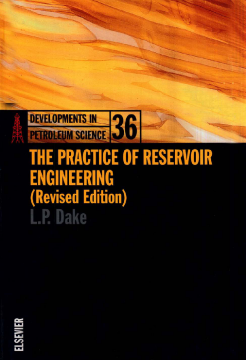
Additional Information
Book Details
Abstract
This revised edition of the bestselling Practice of Reservoir Engineering has been written for those in the oil industry requiring a working knowledge of how the complex subject of hydrocarbon reservoir engineering can be applied in the field in a practical manner. Containing additions and corrections to the first edition, the book is a simple statement of how to do the job and is particularly suitable for reservoir/production engineers as well as those associated with hydrocarbon recovery.
This practical book approaches the basic limitations of reservoir engineering with the basic tenet of science: Occam's Razor, which applies to reservoir engineering to a greater extent than for most physical sciences - if there are two ways to account for a physical phenomenon, it is the simpler that is the more useful. Therefore, simplicity is the theme of this volume.
Reservoir and production engineers, geoscientists, petrophysicists, and those involved in the management of oil and gas fields will want this edition.
...This book is particularly suitable for the hard pressed reservoir/production engineers in its advice, illustrated with 27 examples and exercises based mainly on actual field developments.
Inis/Energy
...intended for those in the oil industry requiring a working knowledge of how the subject of hydrocarbon reservoir engineering can be applied in the field.
Geo Abstracts
Malcolm Pye
...This book tells you all you need to know about reservoir engineering. ...written with (a) wit and style. .. It's a practical book with special emphasis on the offshore, concerned with processes on the scale of "hillsides" not coreplugs. It begins with an introduction inspired by the absence of the word "reservoir" in Daniel Yergin's history of the oil industry, "The Prize". Armed only with Occam's Razor, Laurie tackles the observations, assumptions and calculations that underpin the subject while offering career advice en route - the best time to move jobs is when appraisal has finished and before development begins! ...Chapter 5 is Laurie's masterpiece, 150 pages on waterdrive which could be published as a book in its own right. Drawing on examples from the North Sea, "the biggest laboratory ever for the study of waterdrive" it demolishes the misconceptions that have grown up over relative permeability curves and stresses the importance of the fractional flow equation in understanding fluid displacement. The section on the effects of vertical permeability distributions on waterflooding should be required reading for every oil company geologist.
PES GB
